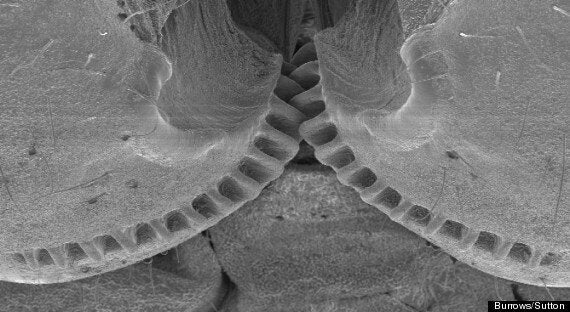A gear system similar to those used on bicycles has been found in insects - showing that nature developed cogs long before humans.
The juvenile Issus - a plant-hopping insect found in gardens across Europe - has hind leg joints with curved cog-like strips of opposing "teeth" that inter-mesh, rotating like mechanical gears to synchronise the animal's legs when it launches into a jump, University of Cambridge researchers said.
The find demonstrates that gear mechanisms previously thought to be man-made have an evolutionary precedent.

Above: The gears in the Issus leg work in a similar way to those found on bicycles and inside car gear-boxes.
The gear teeth on the opposing hind legs lock together like those in a car gear-box, ensuring almost complete synchronicity in leg movement.
This helps with the powerful jumps the insects use to get around.
Professor Malcolm Burrows, from Cambridge's Department of Zoology, said: "This precise synchronisation would be impossible to achieve through a nervous system, as neural impulses would take far too long for the extraordinarily tight co-ordination required.
"By developing mechanical gears, the Issus can just send nerve signals to its muscles to produce roughly the same amount of force - then if one leg starts to propel the jump the gears will interlock, creating absolute synchronicity.
Co-author Gregory Sutton, now at the University of Bristol, said: "We usually think of gears as something that we see in human-designed machinery, but we've found that that is only because we didn't look hard enough.
"These gears are not designed, they are evolved - representing high speed and precision machinery evolved for synchronisation in the animal world."

Above: The gears are only found in juvenile insects and are lost as they pass into adulthood.